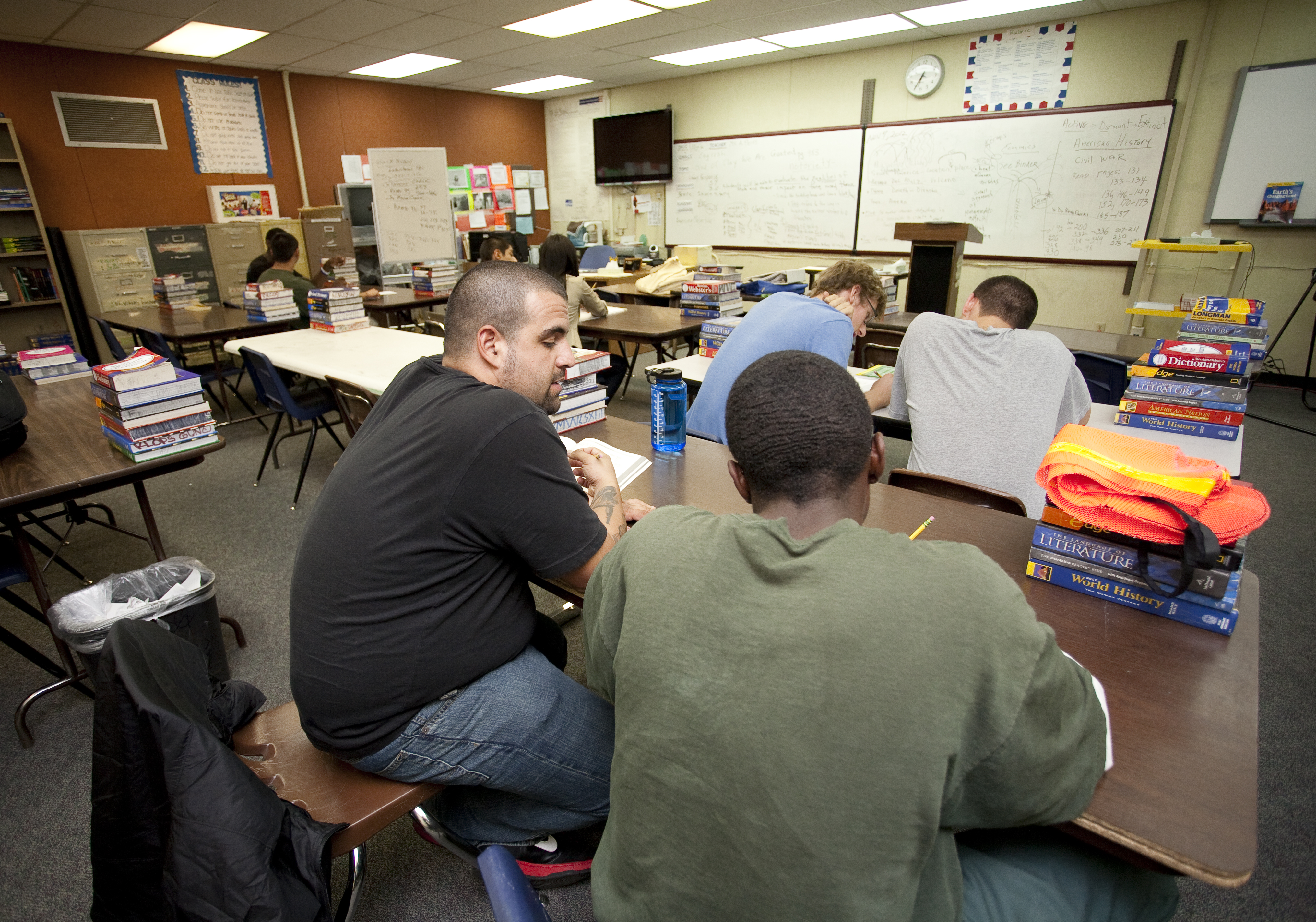UCLA students mentor incarcerated youth

Members of the UCLA Incarcerated Youth Program regularly visit Camp Miller, a juvenile probation facility in Malibu, to mentor and tutor high school-aged boys. The program was started in 1988 by the Muslim Student Association.
By Daily Bruin Staff
Nov. 15, 2012 1:55 a.m.
A large white building, surrounded by a 30-foot barbed wire fence, sat amid a cluster of trees in the outskirts of Malibu.
Inside the facility was a discolored wall, with paintings of mountains, beaches and flowers.
“Welcome to Camp Miller,” the wall read.
Four UCLA students were visiting the site last week as part of the UCLA Incarcerated Youth Tutorial Program.
Twice a week, members from the program come to the probation camp, one of 19 juvenile probation camps in Los Angeles County , to spend an hour tutoring students at the facility.
The boys at Camp Miller are about 14 to 18 years old, and many are convicted felons within the juvenile court system, said Bruce Bates, a deputy probation officer at Camp Miller for 11 years.
The program was started by the Muslim Student Association in 1988. It is open to all students, and usually four to seven people come each visit, said Michael Oshiro, a UCLA doctoral student in education and development director for the project.
Student volunteers from UCLA are paired with one of the high school students at the probation center and mentor them during the time they are there.
Many of the boys at the camp are working to earn a GED diploma or trying to keep up with their schoolwork, so they can return to their normal lifestyle once they leave the camp, said Chris Butler, a fourth-year history student who has been volunteering at the camp since spring 2011.
“Most of the kids are behind on their academics and will never graduate high school,” Bates said. “(The support program) helps just by providing them a positive relationship and showing that people are willing to come out and help them.”
“Part of it is being a friend to them and building a relationship,” Butler said.
In a corner of the small classroom space, Andrew Duncan talked to his mentee, who will soon move out of the facility, about how to remove a tattoo.
“This is my last day with him,” said Duncan. “I am going to talk to him and try to make sure he keeps out of trouble.”
Duncan graduated from UCLA in June with a bachelor’s degree in environmental science. He continues to volunteer with the Incarcerated Youth Tutorial Program.
The boys are first put into group homes and are then shifted to county-level probation camps if they fail to adjust, and then to a state facility operated by the Division of Juvenile Justice if they need more help, Bates said.
“In a high school the students might leave early, but here they are on campus all day and they take the opportunity seriously,” Duncan said. “I think it is important for me to finish what I started with my student.”
Volunteers for the Incarcerated Youth Tutorial program depend on funding from the Undergraduate Students Association Council Cultural Affairs Commission, Oshiro said. Sometimes the volunteers can’t make it out to Malibu for their semiweekly commitment, which Butler said can hinder their efforts.
“It interrupts the process if we can’t see them every week,” he said.
During the site visit last week, second-year African American studies student Jessica Rayside prepared a series of math problems. She said she had only been able to shadow other volunteers since she joined earlier this quarter. This time, she was paired with her own student.
“I fell in love with the program the first time I came here,” Rayside said.
After a long trip to Malibu and an hour of service, the volunteers headed back to the van that would bring them back to campus. Butler stopped by a bulletin board on his way out, examining a picture of one of the boys in the probation center ““ a former student of his who has since left the facility.
“I like the idea of students going out of their way, despite being busy, to help people get out of incarceration and back into education.” Butler said.


